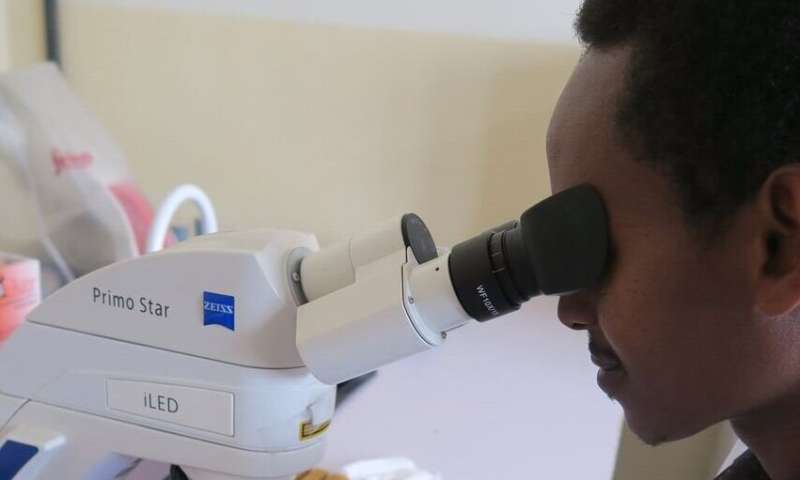Near-patient testing for neglected diarrheal disease in resource-limited countries


Cryptosporidium is a leading cause of diarrhea in children under two years of age in low-resource settings and is an important cause of child death and malnutrition, globally speaking. There is no vaccine and current drugs for cryptosporidiosis are suboptimal, but new drugs are in development. Most diagnostic tests in current use are either inaccurate or are not applicable for resource-limited settings. New treatment trials rely on an accurate and feasible diagnostic test.
Thousands of LED microscopes have been distributed to low-income countries in the last 5-10 years as a diagnostic tool to detect tuberculosis bacteria. With simple modification, the same method can also detect Cryptosporidium. A rapid paper strip test with the important improvement of not requiring refrigerator storage has also recently been developed for Cryptosporidium detection. We aimed to evaluate the diagnostic accuracy and field applicability of both tests.
The study was conducted in children under five years in southwest-Ethiopia. The area has high rates of diarrhea and malnutrition and is therefore globally representative of the populations that are hardest affected by the disease. From December 2016 to July 2018, the study included 912 children with diarrhea or dysentery from the regional hospital in Jimma town, and from Serbo health center in a rural area nearby. Field workers also collected stool samples from 706 control-children without diarrhea from populations around the hospital and health center. LED-microscopy and the test strip were conducted on stool samples by local health workers, and their findings were later compared to a battery of three different reference tests.
The key finding was that the sensitivity of LED-microscopy and the test strip was 88% and 89%, and both methods had excellent specificity (99%). This represents a substantial improvement compared to the methods in current use in some resource-limited countries. LED-AP is a reliable and affordable test for Cryptosporidium diarrhea that can be integrated with existing laboratory infrastructure, near the point of care. The test strip could be an alternative when LED-AP is unavailable but is likely to be more expensive.
Source: Read Full Article




